 |
WAV to MP3 Converter
|
WAV to MP3 Converter converts WAV to MP3 and vice versa in batch. The
converter supports both uncompressed and compressed WAV files. In WAV format specification,
the WAV file could be encoded by PCM, ADPCM, Microsoft GSM, CCITT a-Law, CCITT
mu-Law, G.726, etc. WAV to MP3 Converter supports all the codecs. The software
could encode MP3 as CBR (Constant Bit Rate) and VBR (Variable Bit
Rate). The converter keeps ID3 tag when converting WAV to MP3, and supports
batch conversion.
The software is easy to use, and is fully compatible with 32-bit and 64-bit
Windows 10/8/7/Vista/XP/2000.

What is WAV?
Waveform Audio File Format (WAVE, or more commonly known as WAV due to its filename
extension) (rarely, Audio for Windows) is a Microsoft and IBM audio file format
standard for storing an audio bitstream on PCs. It is an application of the Resource
Interchange File Format (RIFF) bitstream format method for storing data in "chunks",
and thus is also close to the 8SVX and the AIFF format used on Amiga and Macintosh
computers, respectively. It is the main format used on Windows systems for raw
and typically uncompressed audio. The usual bitstream encoding is the linear pulse-code
modulation (LPCM) format. Though a WAV file can contain compressed audio, the
most common WAV audio format is uncompressed audio in the linear pulse code modulation
(LPCM) format. The WAV format supports compressed audio, using, on Windows, the
Audio Compression Manager. Any ACM codec can be used to compress a WAV file. The
user interface (UI) for Audio Compression Manager may be accessed through various
programs that use it, including Sound Recorder in some versions of Windows.
What is MP3?
MPEG-1 or MPEG-2 Audio Layer III, more commonly referred to as MP3, is an audio
coding format for digital audio which uses a form of lossy data compression. It
is a common audio format for consumer audio streaming or storage, as well as a
de facto standard of digital audio compression for the transfer and playback of
music on most digital audio players. The use in MP3 of a lossy compression algorithm
is designed to greatly reduce the amount of data required to represent the audio
recording and still sound like a faithful reproduction of the original uncompressed
audio for most listeners. An MP3 file that is created using the setting of 128
kbit/s will result in a file that is about 1/11 the size of the CD file created
from the original audio source. An MP3 file can also be constructed at higher
or lower bit rates, with higher or lower resulting quality. When performing lossy
audio encoding, such as creating an MP3 file, there is a trade-off between the
amount of space used and the sound quality of the result. Typically, the creator
is allowed to set a bit rate, which specifies how many kilobits the file may use
per second of audio. The higher the bit rate, the larger the compressed file will
be, and, generally, the closer it will sound to the original file.
- Free Download WAV to MP3 Converter
- Install the software by instructions
- Launch WAV to MP3 Converter
- Choose WAV Files
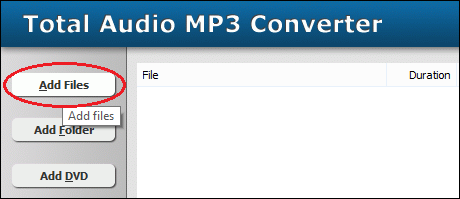
Click "Add Files" to choose WAV files and then add them
to conversion list.
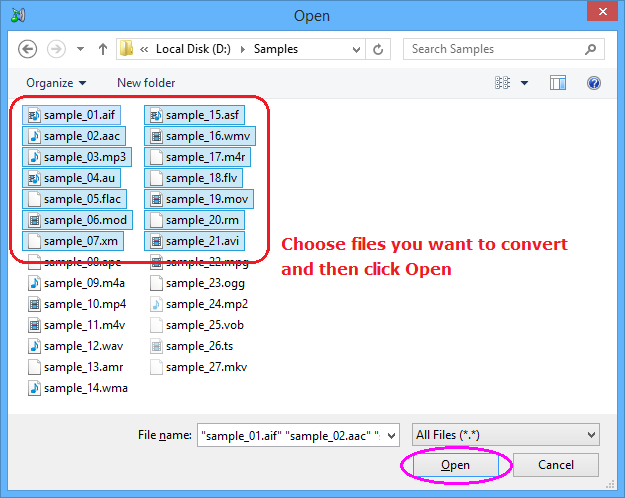
Choose one or more WAV files you want to convert and then click Open.
- Choose "to MP3"
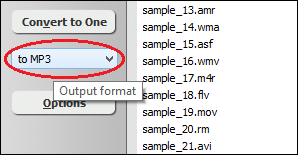
- Convert WAV to MP3
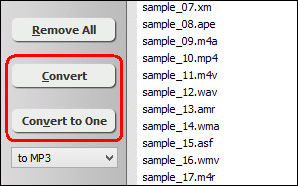
Click on "Convert" to convert WAV files to MP3 format;
alternatively, click on "Convert to One" to convert all
files in list and combine to a single one MP3 file.

The software is converting WAV files to MP3 format.
- Play and Browse MP3 File
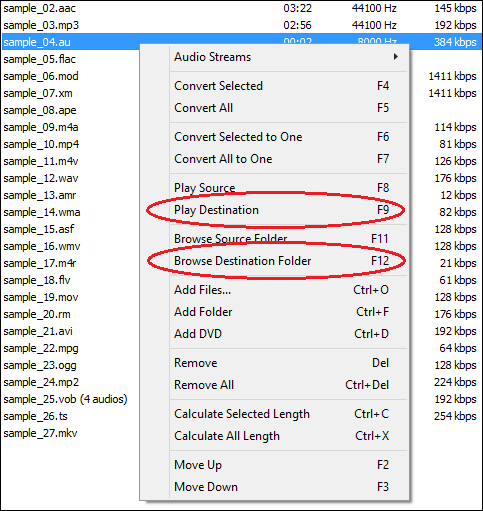
When conversion completes, you could right-click on converted file and choose
"Play Destination" to play the MP3 file; or choose "Browse
Destination Folder" to open Windows Explorer to browse the outputted MP3
file.
Top
WAV to MP3 Converter offers free trial for evaluating the software. If you're
looking for a freeware, please remember a lot of freeware is not professinal.
And some freeware bundles with adware or malware that might harm your system.
WAV to MP3 Converter is 100% clean and safe to install.
It's certified by major download sites.

WAV to MP3 Related Topics:
|

